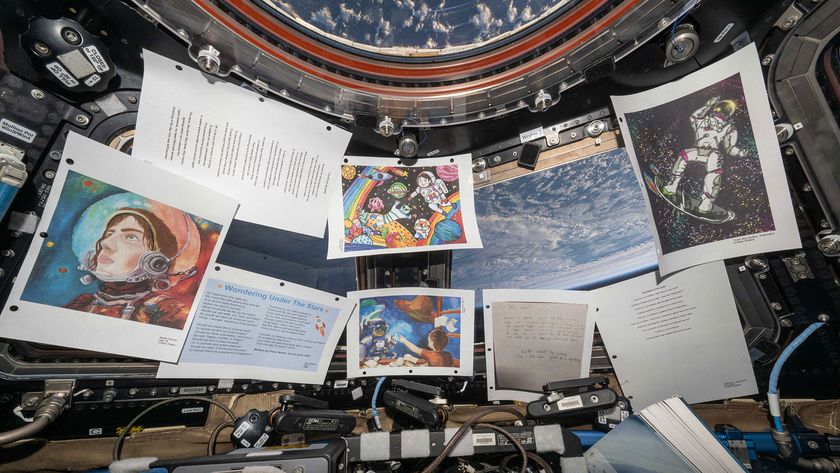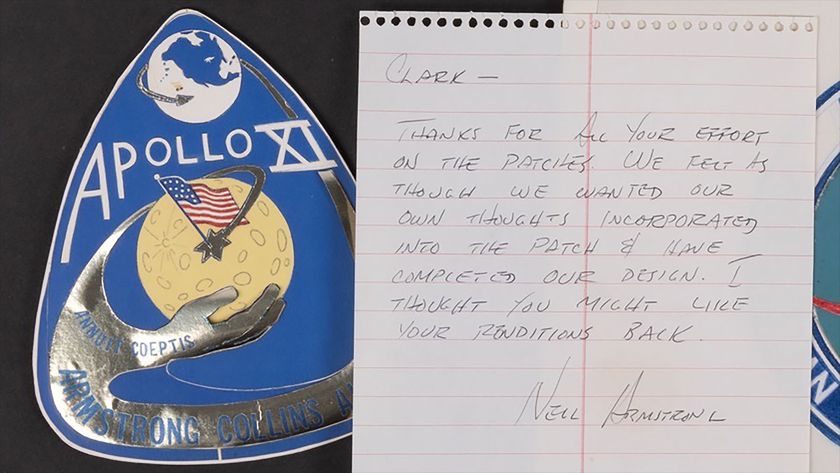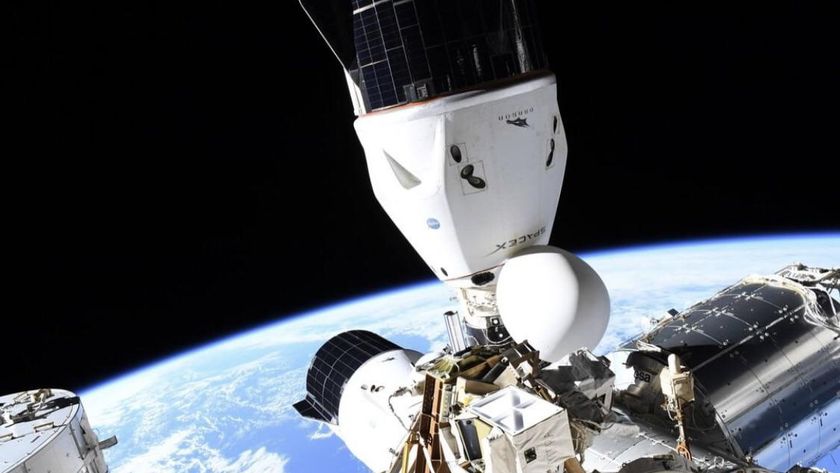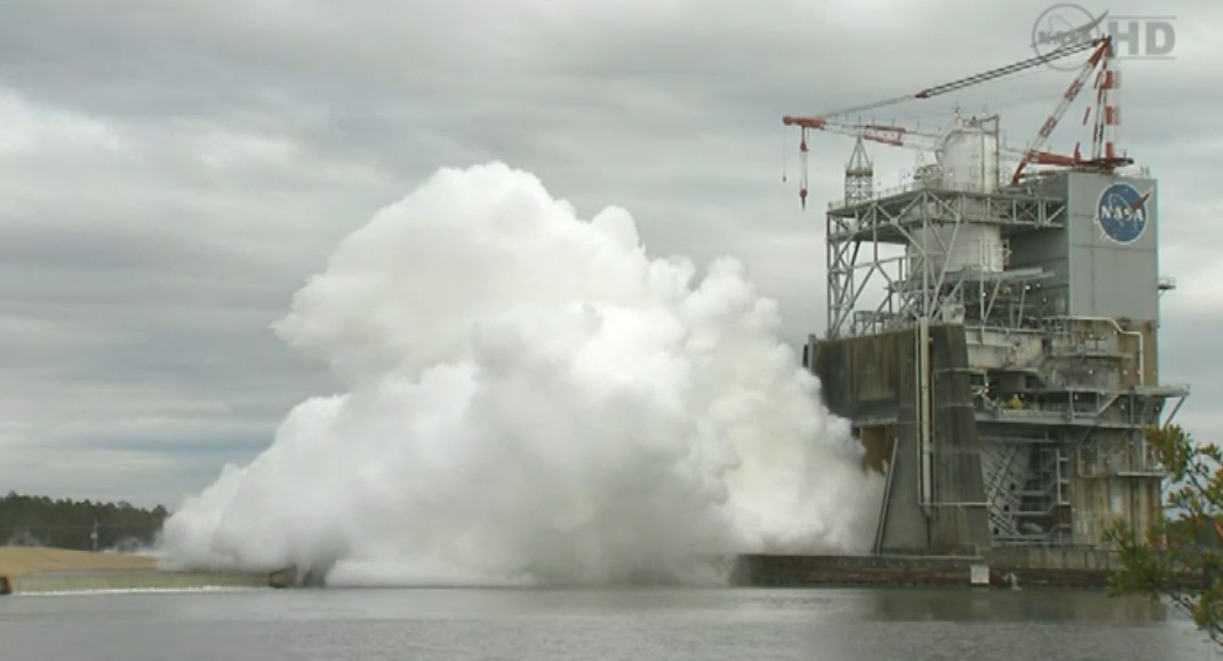
This story was updated at 5:30 p.m. EST.
NASA successfully test-fired a key component of its next-generation heavy-lift rocket today (Nov. 9), putting through its paces a rocket engine that could help propel astronauts to the moon and Mars.
The space agency fired up the huge J-2X engine for more than eight minutes at its Stennis Space Center in Mississippi during the afternoon test, which began at 4:04 p.m. EST (2104 GMT). The J-2X will serve as the upper stage of NASA's Space Launch System, the $10 billion heavy-lift rocket slated to start launching astronauts toward deep-space destinations by 2021 or so.
The J-2X filled the humid Mississippi air with a deafening roar and clouds of billowing grayish-white vapor for the planned 500 seconds — the length of time it would burn during an actual mission.
"Engine runtime 499.97 [seconds]," a test coordinator said when the rocket finally shut down, prompting applause from the engineers and technicians gathered in the control room at Stennis.
While engineers have only just begun analyzing data from the test, early returns suggest the J-2X did very well, officials said.
"The engine performed exactly as we expected it to," Mike Kynard, NASA's SLS liquid engines element manager, said in a post-test news conference. "The first look is, it ran great."
Get the Space.com Newsletter
Breaking space news, the latest updates on rocket launches, skywatching events and more!
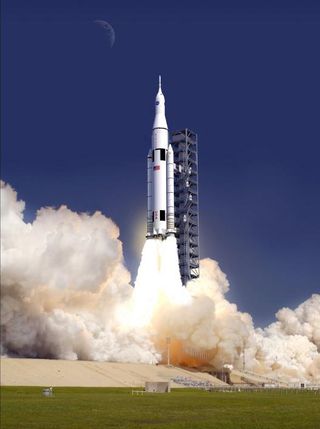
NASA next big rocket
NASA unveiled the Space Launch System rocket design in September. The J-2X engine will power the booster's second stage, while the first stage will use five legacy RS-25D/E main engines that helped launch the agency's now-retired space shuttle fleet.
Both of these engines burn liquid hydrogen and liquid oxygen, and are built by aerospace firm Pratt & Whitney Rocketdyne. The Space Launch System will also use some booster rockets to help it get off the ground, NASA officials have said. [Gallery: NASA's Space Launch System]
In its early incarnations, the SLS will likely be capable of lofting 70 tons of payload, but NASA eventually wants to beef it up to carry 130 tons of material to space. That super-hefty version would be 10 to 20 percent more powerful than the massive Saturn V rockets that launched astronauts to the moon.
Orion's rocket ride
NASA plans to use the Space Launch System to loft astronauts into orbit aboard the Orion Multi-Purpose Crew Vehicle, which is also in development.
The huge rocket won't be ready for its first test flight until December 2017, but NASA recently said it wants the Orion capsule to take its first unmanned trip to space in 2014. So Orion's first test flights will likely come aboard a different rocket, perhaps a Delta 4.
Since mothballing the shuttles in July of this year, NASA has been completely dependent on Russian Soyuz vehicles to get its astronauts to and from low-Earth orbit. The agency plans to rely on private space taxis built by commercial companies to ferry astronauts to and from low-Earth orbit until the Space Launch System and Orion can be ready for their first deep space missions.
NASA hopes that at least one of the several private space taxi efforts it is backing will be up and running by 2015. That will free the space agency up to focus on getting humans to destinations in deeper space, such as asteroids and Mars.
Today's successful test was a step toward making NASA's exploration visions a reality, officials said.
"The future is bright for exploration, recognizing we do live in a constrained budget environment at this point," said Daniel Dumbacher, NASA's deputy associate administrator for exploration systems development. "This is an early step, but it's evidence that we're making progress."
You can follow SPACE.com senior writer Mike Wall on Twitter: @michaeldwall. Follow SPACE.com for the latest in space science and exploration news on Twitter @Spacedotcom and on Facebook.
Join our Space Forums to keep talking space on the latest missions, night sky and more! And if you have a news tip, correction or comment, let us know at: community@space.com.

Michael Wall is a Senior Space Writer with Space.com and joined the team in 2010. He primarily covers exoplanets, spaceflight and military space, but has been known to dabble in the space art beat. His book about the search for alien life, "Out There," was published on Nov. 13, 2018. Before becoming a science writer, Michael worked as a herpetologist and wildlife biologist. He has a Ph.D. in evolutionary biology from the University of Sydney, Australia, a bachelor's degree from the University of Arizona, and a graduate certificate in science writing from the University of California, Santa Cruz. To find out what his latest project is, you can follow Michael on Twitter.
